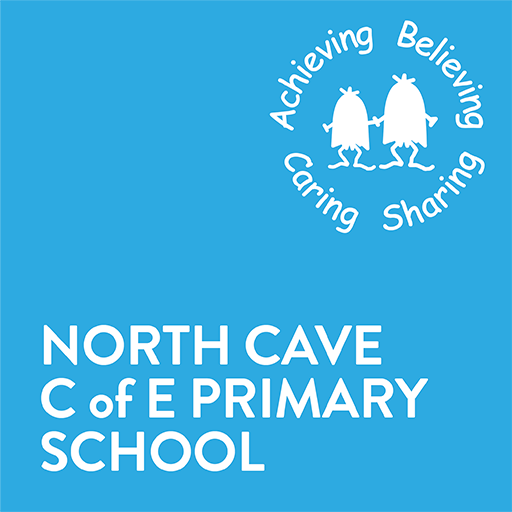I can do all things through him who strengthens me,
Philippians 4:13
At North Cave C.E. Primary School we believe that children need good models of writing to support them to produce their own high-quality work. We incorporate The Talk for Writing process, developed by Pie Corbett and supported by Julia Strong into our teaching of writing. It involves reading, writing, storytelling, poetry, drama and lots of discussion.
Children are taught writing skills through studying a range of both fiction and non-fiction texts including teacher produced models. Our children write for a range of purposes and audiences, giving them exposure to circumstances where they need to adapt their vocabulary and overall formality to suit the purpose of what they are writing. Children become familiar with a text, before trying to innovate them and gradually apply more independent changes to the model until they can write freely with confidence.
In addition, we use picture books, topic work, a novel study and through cross-curricular links as our stimulus for writing.
Progression in Writing Genres
Please click on the link for our Progression in Writing Genres.
Glossary for the Programme of Study English
Please click on the links for the Glossary for the Programme of Study for English.
Talk for Writing

The five main parts to the Talk for Writing process.
- Cold Write
We start each text type with a Cold Write. This is a’ have-a-go’ task and provides us with a baseline assessment so we can see what the children already know and informs the teacher about what needs to be taught to successfully produce a particular text type across a range of fiction and non-fiction genres. For the cold write, there is a stimulus for writing but no direct teaching.
- Imitate
During the imitate stage, a creative ‘hook’ is used to engage our children whilst being introduced to the audience and purpose for their writing. The children then learn a model text which contains all of the ingredients they will need to be successful in producing a particular text type. A text map – a series of pictures may be used to help with this. Once we can talk the text we then look at the language and structure of the text and analyse it in detail. We think about the features of the text type and our children produce a toolkit to remind themselves of what to include in their writing. Throughout the process they are encouraged to ‘magpie’ ideas. We practise using the key features during the imitate stage.
- Innovate
During the innovate stage the children are guided to write their own text type as they are familiar with it based on modelling. The children may be asked to change the text map and retell new versions before writing or use ‘boxed up’ planners. The class will discussion ideas and generate ideas followed by modelled, shared and guided writing. The children are given feedback during the lesson and are taught how to improve their writing, individually and as a whole class. The aim is for the children to eventually be able to independently edit and improve their own work.
- Independent application
During the independent application stage, the children use all of the skills they have practised to produce a text independently. This is when they produce their hot write. Further input, rehearsal and guidance with planning may be needed before starting to write independently. The children edit and improve their work before their work is assessed.
- Hot Write assessment
The hot write (independent application) is used to build a picture of a child’s ability in writing, judged against a range of objectives (Teacher Assessment Framework) for each year group.
Grammar and Punctuation
Grammar and punctuation are taught during our English lessons and discrete lessons in line with the National Curriculum requirements. We teach grammar and punctuation within the context of what we are writing, often for real purposes. We explore real-life examples from published authors to understand how they have manipulated grammar to make their writing effective and interesting.
Our children are given the opportunity to apply their grammar and punctuation skills across the curriculum.
Punctuation and Grammar Expectations
Please click on the link to see our Progression in Punctuation and Grammar documents.
Year 1
Year 2
Year 3
Year 4
Year 5
Year 6
Spelling
At North Cave C.E Primary School we aim for our children to be able to:
- know a range of spelling strategies and an understanding of spelling rules
- recognise that spelling is an important skill
- become confident in their spelling skills and become independent spellers
- be able to spell a variety of patterns and words accurately
- have a range of strategies to move towards the conventions of the written word
Our children are expected to learn compulsory lists of spellings as set out in the National Curriculum. These words are ones which are used a lot or may be tricky to spell. It is expected that all children will be able to spell these words by the time they leave our school.
When learning new spelling words, children are encouraged to use some of the following strategies:
- split words into syllables
- create silly sentences
- identify tricky parts of words and then say words in a silly voice to pronounce the tricky part
- identify words within words
- Look, Cover, Say, Write, Check.
Spelling Objectives
Spellings are set as part of our homework. Please click on the link for our spelling objective overview.
Common Exception Words
In addition to the weekly spellings, the children are expected to learn to spell the common exception words for their year group.
Please click on the link for our common exception word lists.
High Frequency Words
Furthermore, there are two sets of high frequency words which are taught.
Please click on the link for 100 High Frequency words and 200 High frequency words.
